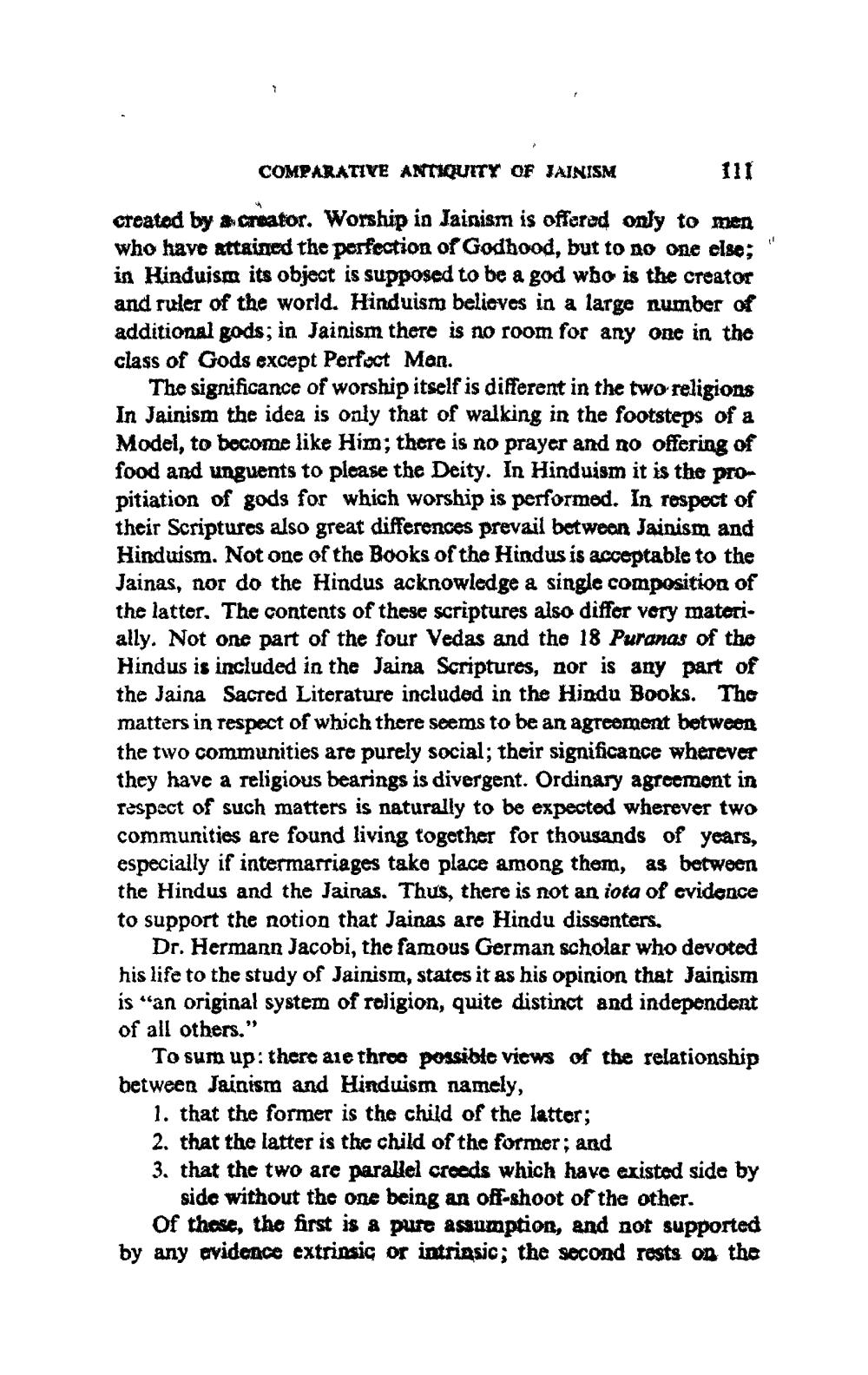________________
COMPARATIVE ANTIQUITY OF JAINISM
111 created by a creator. Worship in Jainism is offered only to men who have attained the perfection of Godhood, but to no one else;" in Hinduism its object is supposed to be a god wbo is the creator and ruler of the world. Hinduism believes in a large number of additional gods; in Jainism there is no room for any one in the class of Gods except Perfioct Mon.
The significance of worship itself is different in the two religions In Jainism the idea is only that of walking in the footsteps of a Model, to become like Him; there is no prayer and no offering of food and unguents to please the Deity. In Hinduism it is the propitiation of gods for which worship is performed. In respect of their Scriptures also great differences prevail between Jainism and Hinduism. Not one of the Books of the Hindus is acceptable to the Jainas, nor do the Hindus acknowledge a single composition of the latter. The contents of these scriptures also differ very materially. Not one part of the four Vedas and the 18 Puranas of the Hindus is included in the Jaina Scriptures, nor is any part of the Jaina Sacred Literature included in the Hindu Books. The matters in respect of which there seems to be an agreement between the two communities are purely social; their significance wherever they have a religious bearings is divergent. Ordinary agreement in respect of such matters is naturally to be expected wherever two communities are found living together for thousands of years, especially if intermarriages take place among them, as between the Hindus and the Jainas. Thus, there is not an iota of cvidence to support the notion that Jainas are Hindu dissenters,
Dr. Hermann Jacobi, the famous German scholar who devoted his life to the study of Jainism, states it as his opinion that Jainism is “an original system of roligion, quite distinct and independent of all others."
To sum up: there are three possible views of the relationship between Jainism and Hinduism namely,
1. that the former is the child of the latter; 2. that the latter is the child of the former; and 3. that the two are parallel creeds which have existed side by
side without the one being an off-shoot of the other. Of these, the first is a pure assumption, and not supported by any evidence extrinsic or intrinsic; the second rests on the




